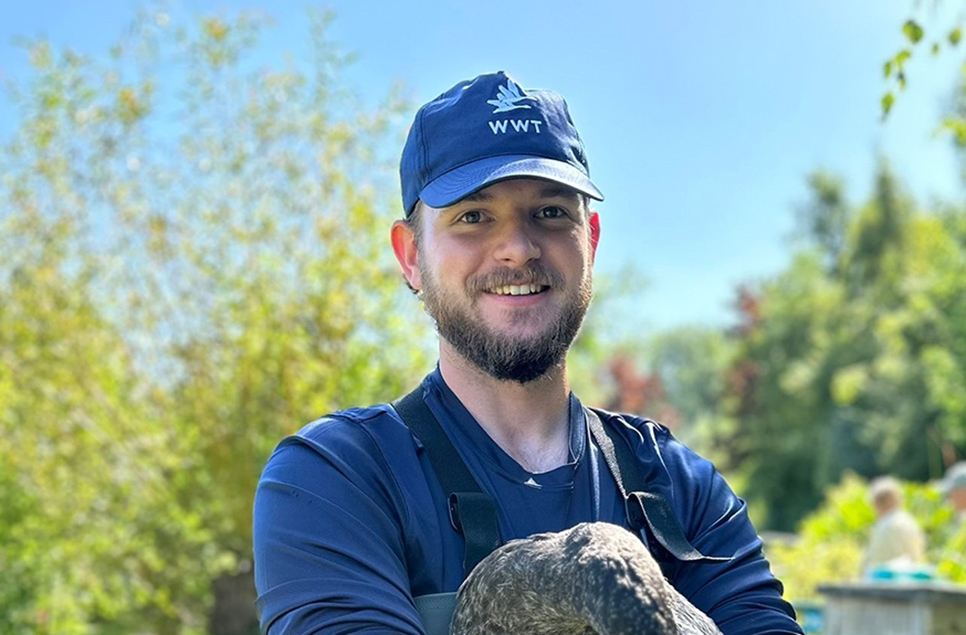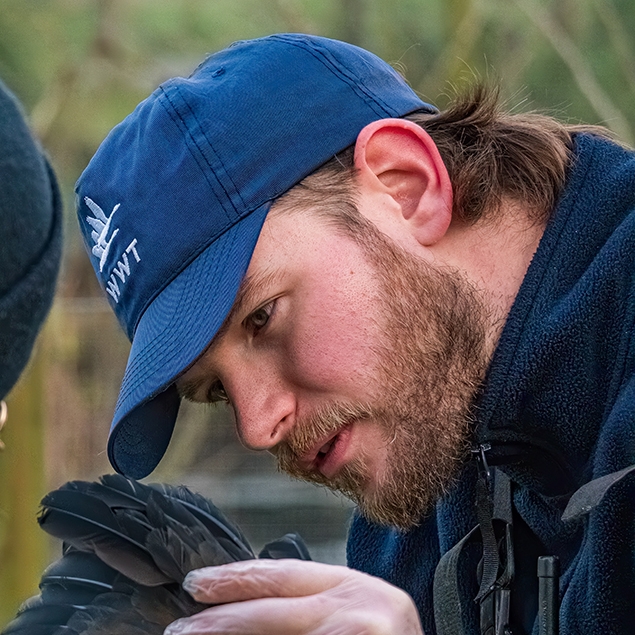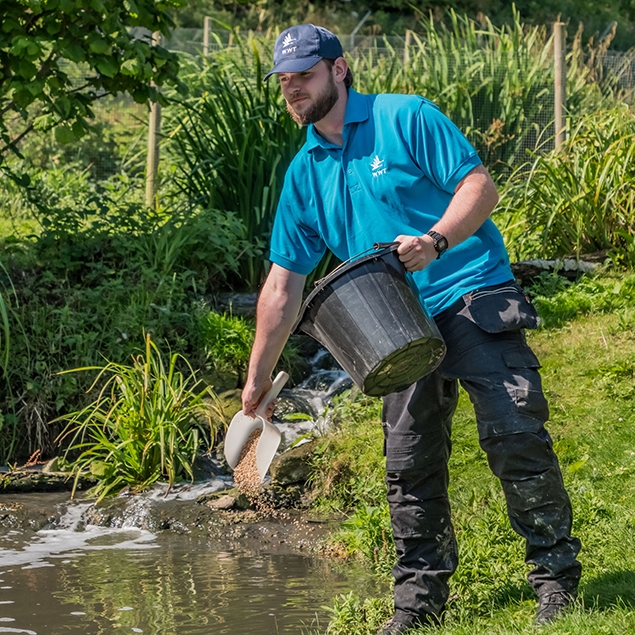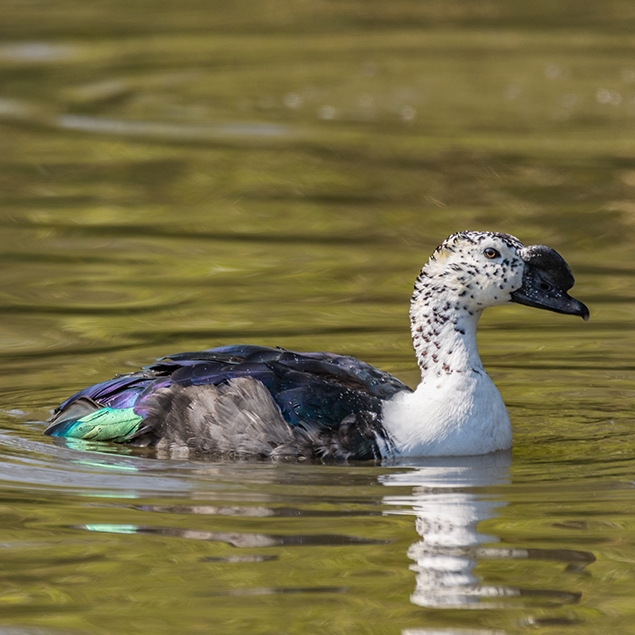Meet The Team: Daniel Scott - Collection & Maintenance Keeper
Have you ever wondered what goes into caring for the amazing animals and habitats here at WWT Washington Wetland Centre? From feeding and keeping a close eye on both feathered and non-feathered residents to maintaining the beautiful landscapes they call home; our Collection & Maintenance Keepers play a vital role in it all.

In this month’s Q&A, we chat with Daniel Scott to uncover the ins and outs of his daily work, the challenges, and joys of working with wildlife, and the moments that make life as an animal keeper so special. Join us as we dive into the passion and dedication that help our wetland world flourish!
Hi Dan! Let’s kick things off - how long have you been at WWT Washington, and what inspired you to become a Collection & Maintenance Keeper?
Hello, yes! I’ve been at WWT Washington since July this year (2024), so just over five months now. From a very young age, I’ve always been passionate about animals and knew I wanted to work with them someday. I love learning about different species, understanding their unique needs, and getting to interact with them every day.
In 2022, I graduated with a degree in Animal Science and Welfare from Teesside University and started looking for roles in the animal sector. When I saw the job opportunity here, I couldn’t pass it up. I’m local to the area, and WWT Washington has always held a special place in my heart. I visited often as a kid, both on school trips and as a member of the public, so to now be part of the team at this beautiful, wildlife-rich site is a dream come true!

What qualifications or experience would you recommend for someone who wants to become a keeper?
There are so many ways to get into animal keeping, which is great because it means you can find a path that suits you! Having a degree or a Level 3 qualification in something like animal science, welfare, or a related field is always a solid starting point.
Another fantastic route is completing a placement opportunity where you can get hands-on experience working with animals, it’s such a valuable way to learn the ropes. Volunteering is also key! Gaining as much experience as possible at relevant sites, like wildlife reserves, zoos, or sanctuaries, really helps you stand out and prepares you for the role. It’s all about showing your passion and willingness to get stuck in!

Do you have any advice for someone hoping to get into this line of work?
Absolutely! My top tip is to grab every opportunity you can and build up as much experience as possible. Volunteering is an amazing way to get started—not only will you gain valuable experience, but you’ll also learn so much from working alongside qualified, knowledgeable people who are passionate about what they do.
If you can, try to work with a variety of species. It’s fascinating to see how different their requirements, diets, and behaviours can be, and it really broadens your understanding. Plus, it shows potential employers that you’re versatile and eager to learn.
Can you describe a typical day for you?
No two days are ever the same when you’re working with the animal collection - it keeps things exciting! We’re constantly adapting to different environments, scenarios, and challenges, but there are some tasks that are part of our daily routine.
First up, we feed all our bird species and family of otters, do headcounts, and carry out visual health checks on the entire collection to make sure they are all happy and healthy. We also check enclosures are secure, administer any medication, and tackle routine jobs like cleaning ponds or shelters, preparing fish for our otters, and restocking supplies. Fence voltages need to be checked, and record-keeping is a big part of the role too.
One of the highlights of my day is delivering otter and flamingo talks to our visitors - it’s always fun to share what we do and see their reactions! The rest of the day might involve vegetation management, enclosure cleaning, general maintenance, or dealing with unexpected issues like gritting icy paths, clearing overflowing ponds or caring for poorly birds. It’s a busy, hands-on job, but that’s what makes it so rewarding!

What’s the most rewarding part of your role at WWT?
For me, the most rewarding part is having the chance to share what I’ve learned with our visitors. It’s amazing to see people get excited about our collection species and walk away knowing a little more about them. My hope is that sparking this interest inspires them to care about wildlife and conservation - and maybe even take steps to help protect these animals in the wild.
This feels especially important when it comes to vulnerable species like our Asian short-clawed otters and nene (Hawaiian geese). Knowing that what we do here could help make a difference to their wild counterparts makes every day so worthwhile!
What are some of the challenges you face as part of the Living Collection team?
There’s never a dull moment in this role, and with that comes plenty of challenges! The weather is a big one - it can completely change our plans. We always check forecasts so we can stay ahead, but it’s especially important for the safety of our animals. For example, if it’s icy or very windy, we need to house the Chilean flamingos to keep them safe and comfortable.
Safety is another big focus for us. We work with some dangerous animals and equipment, so wearing the right PPE and having proper training is essential to carry out tasks without injuries.
Then there’s pest management, which is something you might not think about but is really important. Other animals can steal food meant for our birds, which could lead to underfeeding. To tackle this, we have systems in place like food separation, careful feeding techniques, and making sure no excess food is left on the floor overnight.
It’s all part of the job, and while it can be tricky at times, the rewards definitely outweigh the challenges!

Do you have a favourite species and why?
Yes! My favourite species has to be the American comb duck. They’ve got such a unique look - almost prehistoric, really! I’m especially drawn to their feather colours. When the light hits them just right, they’re so iridescent and vibrant—it’s like they’re glowing.

Are there any species or habitats on-site that you’re particularly passionate about protecting?
Definitely! I’m really passionate about the protection of our common cranes. WWT has played such an inspiring role in boosting their native population, and it’s amazing to see the difference conservation efforts can make.
On a personal level, I absolutely love working with our two common cranes on-site, they’re full of personality! They can be a bit stubborn at times, which only adds to their charm. It’s a privilege to work so closely with them while knowing we’re contributing to the conservation of their species.

Where’s your favourite spot on site and why?
My favourite spot has to be Ganderland - it’s such a lively and entertaining area! Feeding time is the best because you get to see all the different goose species interacting in their own quirky ways. The red-breasted geese are the absolute stars of the show - they’re so full of personality and never fail to put a big smile on my face. It’s one of those places where you can’t help but stop, watch, and just enjoy the moment!
Fancy meeting more of our team?
We're introducing you to the team here at WWT Washington who are from a variety of roles within the trust, and who have a plethora of career and education backgrounds.
Meet the team


